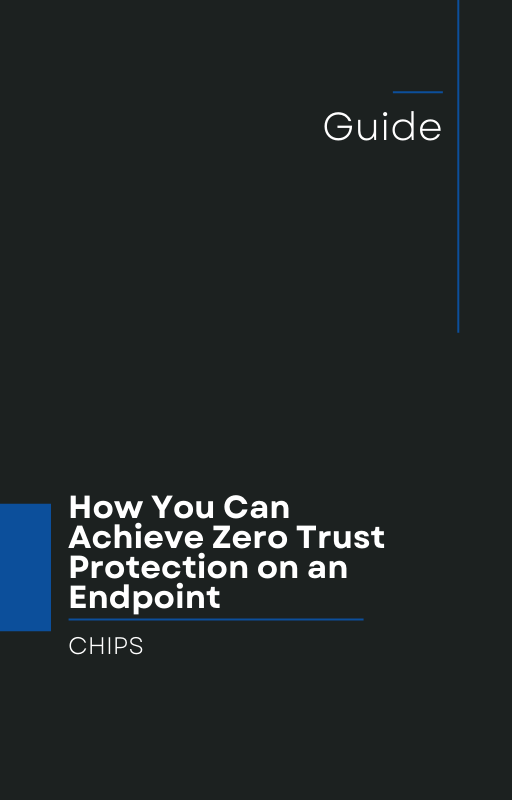Recently, a troubling new trend has emerged: threat actors are abusing Microsoft Teams – a tool that many businesses trust and use daily – as a vector for remote access attacks.
According to a report by CyberSecurity News, attackers are impersonating internal IT staff accounts in Teams, persuading employees to install remote access software (like QuickAssist or AnyDesk), and then running PowerShell-based malware for persistence, credential theft, and full system compromise. (cybersecuritynews.com)
This story is not just another cybersecurity headline. It is a red flag for all business owners and security leaders. Our traditional approaches such as detection, response, and endpoint protection are no longer enough on their own. Let me walk you through what is happening, why your defenses are vulnerable, and how AppGuard offers a better alternative.
The Attack Vector: “Friendly” IT Support via Teams
Here is how the typical campaign unfolds (based on the CyberSecurity News write-up):
-
An attacker spins up a Teams account using display names like “IT SUPPORT ✅” or “Help Desk Specialist,” even leveraging onmicrosoft.com domains to look legitimate.
-
They contact employees via chat or call, present a “routine issue” or system alert, and ask the user to install remote access software like QuickAssist or AnyDesk.
-
Once the backdoor is installed, a PowerShell script downloads the main malicious payload. That payload can steal credentials, persist deep in the system, move laterally, and evade or resist removal.
-
In some variants, the malware marks its own process as “critical” so that if someone tries to terminate it, the system crashes, discouraging removal.
-
The attackers may even show fake Windows credentials dialogs to trick users into entering their passwords, which are then stolen.
In short: the attacker uses social engineering, built-in tools, and scripting to slip past many traditional controls.
Why Detect & Respond Is Failing
For years, the core model of endpoint security has been:
-
Detect threats (via signatures, heuristics, behavior monitoring)
-
Respond with remediation, quarantine, removal, or rollback
But this model has limitations, especially given how modern attacks function:
-
Evasion is easier. Malware can be obfuscated, polymorphic, or use living-off-the-land techniques like PowerShell and legitimate tools to stay under the radar of detection engines.
-
Delay is deadly. Detection and response always involve a lag, a time between an attack’s start and its detection and mitigation. During that window attackers can move, steal, or plant deeper hooks.
-
Containment is weak. Even if an attack is caught, by that time lateral movement or data exfiltration may already have occurred.
The Microsoft Teams campaign is a perfect illustration. The attacker installs legitimate remote software, uses PowerShell (which is rarely blocked), manipulates user trust, and triggers behavior that signature or heuristic systems may struggle to catch early.
What is needed instead is a pre-emptive, isolation-centric approach: stop the malicious behavior before it can take root or spread.
Meet AppGuard: Isolation First, Not Detection First
Here is where AppGuard comes in. Rather than relying on detection after something suspicious starts, AppGuard follows a zero-trust, application isolation philosophy that prevents untrusted or unknown actions from executing at all.
Why AppGuard Works
-
Proven track record. AppGuard has been used in highly demanding environments for 10 years with a strong operational record of stopping advanced threats.
-
Containment and isolation. Even if a malicious payload is introduced, AppGuard isolates it so it cannot pivot or tamper with critical system components.
-
Minimal alerts and noise. Because the protection operates on a prevention and containment model, there is less reliance on noisy detection rules and chasing alerts.
-
Compatibility. AppGuard can coexist with existing security stacks. It is not an “either/or” but can add a powerful layer above what you already have.
-
Commercial readiness. Until recently, this level of endpoint isolation was mostly in the domain of high-security or government systems. Now AppGuard is available for commercial adoption.
When an attacker attempts to install remote access tools or execute a PowerShell payload inside a Teams session, AppGuard can intervene upfront. It can prevent the installation, prevent execution of unauthorized scripts, or contain them so they cannot touch critical assets.
With AppGuard, you move from trying to detect a breach after it starts to preventing lateral movement and disabling exploit chains before they escalate.
From Theory to Business Reality
Let’s walk through a scenario using the Teams exploit:
-
Impersonation contact. The attacker messages an employee.
-
Prompt to install remote software. They instruct the employee to install QuickAssist or similar.
-
Execution of PowerShell payload. A script downloads and runs malware.
-
Lateral spread, credential theft, persistence.
In a detect and respond environment, steps 3 and 4 might trigger alerts if they are noticed in time. But each moment of delay is risk. With AppGuard:
-
Step 2 might fail outright (remote tool install blocked)
-
Step 3 might be allowed but fully isolated, so the script cannot reach credential stores, cannot pivot, cannot survive reboot or tampering
-
Even if part of the payload is allowed accidentally, it is contained so it cannot harm core systems
The difference is dramatic. You shift from reactive to proactive, from chasing alerts to enforcing containment and stopping exploit chains cold.
Why Business Owners Should Care
-
Trust in internal tools can be weaponized. Your employees expect Teams, Microsoft 365, or Slack. Attackers now use that trust as the vector.
-
The cost of breach is rising. Downtime, reputational damage, compliance fines, and customer loss all escalate.
-
Detection-first models are no longer sufficient. As attacks get stealthier and more creative, you need stronger boundaries at the endpoint level.
-
Isolation is affordable and scalable. You do not have to rip out your existing stack. AppGuard can complement what you already have.
-
A decade of maturity. This is not a new, untested product. AppGuard has real-world operating history.
When you adopt AppGuard, you make it much harder for attackers to weaponize collaboration tools or deliver malware, because you are no longer giving them a clear runway between compromise and containment.
How to Start Moving from Detection to Isolation
-
Assess your current endpoint protection posture. What relies purely on detection or behavioral rules? Where are your blind spots such as PowerShell, living-off-the-land tools, or internal messaging?
-
Pilot AppGuard in a controlled environment. Start with critical systems or high-risk groups to prove value without massive disruption.
-
Train your team. Make sure admins and users understand the change in mindset, from chasing threats to enforcing containment.
-
Measure containment success. Track how many suspicious actions are blocked or isolated without alert storms, how many lateral attempts fail, and how much dwell time your environment allows now.
-
Scale across the fleet. Once confidence grows, roll out more broadly.
Stopping a threat before it spreads is often more cost-effective than cleaning up the aftermath.
In Summary
The Microsoft Teams abuse campaign is a stark reminder that attackers are innovating fast. They are turning your trusted collaboration tools into attack vectors and they are relying on gaps in detection, delays in response, and lack of containment to succeed.
A security model that emphasizes detection and response after the fact is increasingly fragile. Instead, you need a protection approach that isolates, contains, and preempts exploitation. AppGuard delivers exactly that and for over a decade has proven its value in even the most demanding environments.
If you are a business owner, CISO, or IT leader, now is the time to evolve your strategy. Do not wait for a breach to reveal gaps you already have.
Call to Action
At CHIPS, we specialize in designing robust cybersecurity strategies tailored to real business risk. Talk with us about how AppGuard can prevent incidents like the Microsoft Teams exploit and how to move your security posture from “Detect and Respond” to true “Isolation and Containment.” Let’s strengthen your frontline so that threats never gain traction. Contact us today.
Like this article? Please share it with others!

September 26, 2025

Comments